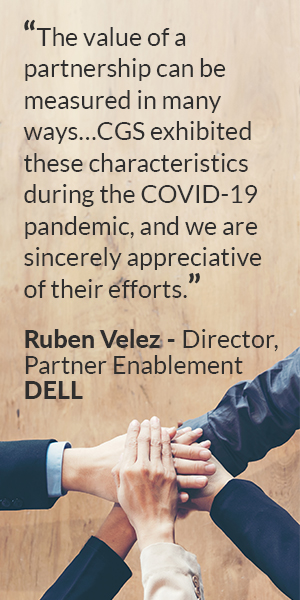How to Meet Customer Service Demands in light of Covid-19

The coronavirus pandemic is having far-reaching effects, not just today but well into the foreseeable future. “This is actually a fundamental reset. It’s not just an economic event. It’s not just a healthcare crisis. It’s a pervasive, system-changing, life-altering series of events,” said Miura-Ko, co-founder partner of Floodgate, a Silicon Valley venture capital firm.
Large scale market disruptions shine bright spotlights on poor performing business areas and practices. Correcting these weaknesses is critical to future growth. Research by McKinsey & Company into economic downturns found that “that firms that invest when valuations are low outperform those that do not. Organizations that make minor changes to the edges of their business model nearly always fall short of their goals.”
In other words, find out what’s not working and fix it quickly.
Customer service is a spotlighted weak area despite having been much researched, analyzed and written about it. The 2020 CGS Customer Services Preferences in Times of Distress Survey found that brands are not heeding customer feedback. That spells bad news for organizations that have not aligned their customer service practices to meet buyer expectations.
Over 53 percent of study respondents had been disappointed by a brand’s customer service within the past year. While that percentage might not seem alarming, the top three contributing factors are: Customer issues not quickly fixed, inability to reach a human agent, and repetitive questions asked by multiple agents.
Regardless of the study respondent’s gender or age, quickly resolving their service issue was their top expectation. Respondents 45 years of age and older listed the opportunity to speak with a human agent as next in importance. Interestingly, younger respondents listed speaking to a human agent as third. Their second priority was working with a friendly agent. Similar differences exist between women and men. Forty percent of women listed speaking with a human agent second most important while men listed working with a friendly agent.
When it was imperative to reach a brand, all respondents chose the phone over all other mediums. Texting was the second choice across ages. 18 to 24-year-old preferred email over chat/direct messaging.
Harvard Business Review recently analyzed one million customer service calls across a broad cross-section of industries and call volume doubled with customers stressed and anxious. Customer service representatives also experienced higher stress levels as they shifted to work from home without ready access to resources found in contact centers. The result was increased hold times and a 68 percent increase in call escalations.
Contact centers should implement three actions to improve customer-rep interactions:
- Continue integrated coaching while reps are working from home.
- Use tools like Slack and instant messaging to build virtual communities where reps can access advice and feel connected with co-workers.
- Empower customer service agents with the decision-making power and updated policies to solve customers’ problems.
Frequently at the end of a contact center call, a customer satisfaction survey is offered. While most brands tout their thirst for customer feedback, survey results lead one to believe otherwise.
Over 28 percent of the CGS study respondents do not fill out customer surveys because they “don’t have the time.” The 40 percent that do complete surveys only do it when they’ve had a good experience with women completing surveys slightly more often than men, 39 percent versus 32.6 percent, respectively.
The real reason why surveys go unanswered may lie in the fact that the majority of respondents believe brands disregard their feedback.
Feelings of being unheard and disregarded heighten customer stress and concerns over data security. Over 60 percent of respondents were either not confident or unsure about the safety of their data shared during service interactions.
The study paints a picture of distrust in brands. And it’s easy to see why – the inability to reach a human service representative when the customers’ need is high coupled with lack of transparency around returns, ship dates, resolution timeframes, data security and multiple agent interactions. This lack of trust affects not only loyalty but also brand credibility. Twenty-seven percent of respondents question the authenticity of customer reviews.
Even in the best of times, the study findings are disturbing. During a significant disruption with rising unemployment, economic uncertainty and new social patterns, brands that ignore the study findings may find their prospects bleak.
Deloitte offers twelve steps to maintaining customer loyalty and trust during COVID-19, stressing the importance of communication. Frequently communicate with customers and employees and take care of them. Assess your orders, inventory, service levels, marketing and advertising to make sure you’re selling what customers need, at a reasonable price and orders can be filled. Team up with suppliers and partners to find new ways to secure supply and meet customer needs.
The post-COVID-19 world will be different from pre-COVID. Several trends are reshaping the future of commerce, customer service and how organizations will operate. Customers are demanding authentic human connections with brands that will redefine commerce. In response, companies will organize and work differently to deliver on customer expectations faster and more nimbly. Lastly, focus on company purposes rooted in sustainability and long-term strategic planning will replace short-termism.
Customer trust is an organization’s competitive advantage and worth more than gold. The cavalier approach brands have taken in the early 21st century will not suffice. The bottom-line is brands must be reachable where customers are and be painfully transparent to regain their trust to grow.


